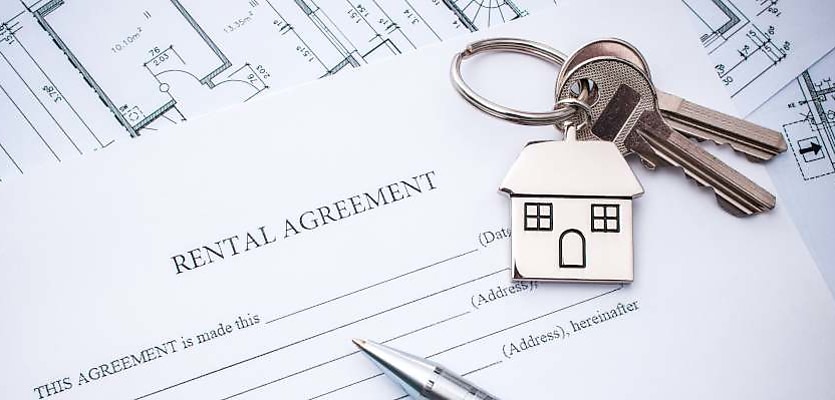The rental prices of both houses and units have fallen across most of the cities in Australia for the June quarter, as identified by the most recent Domain report.
The Domain Rental Report for the quarter showed that rental prices in Sydney, Melbourne, Adelaide, Brisbane, Canberra and Darwin were generally lower from the previous quarter, while the prices for Perth and Hobart are on the rise.
Sydney saw house rents fall by 3.6 per cent over the year to $530 per week — $20 below the peak of $550 reached in 2017 and 2018. Unit rents fell by 0.9 of a percentage point in the quarter and 4.5 per cent over the year.
“Rents held up the best on the Central Coast and on Sydney’s North Shore, but fell in other Sydney regions,” the report stated.
“Despite this fall, Sydney remains the most expensive capital city to rent a unit by a significant margin.”
For the Melbourne region, house rents fell by 2 per cent in the June quarter, but remained unchanged over the year at $430 per week, while unit rents increased by 2.4 per cent over the year.
However, Domain remains positive for Melbourne as the “city’s biggest apartment construction boom [is] occurring during this time”.
“Strong population growth, which has averaged 2.6 per cent a year since 2013, has created ongoing demand for rental properties. Melbourne’s vacancy rate remains low, but has increased to 1.7 per cent from 1.3 per cent a year ago,” the report identified.
In Brisbane, rental prices for houses in the Greater Brisbane region fell in the June quarter, but remained unchanged year-on-year. Unit rental prices were unchanged over the quarter but grew by 2.7 per cent over the year.
The typical house is now rented at $400 per week and a typical unit $380 per week.
“Unit rentals have held up well in recent years, even as a large supply of new apartments have been built. Brisbane’s rental vacancy rate fell from 2.6 per cent to 2.2 per cent over the past year, which is a sign of a strengthening rental market,” it showed.
As for Adelaide, house rents fell by 1 per cent in the June quarter, but increased by 2.7 per cent over the year. Unit rents increased by 1.7 per cent over the year.
The typical unit in Adelaide rents for $305 per week, which is the cheapest across all capital cities.
“Adelaide’s vacancy rate remains low and has declined to 1 per cent, from 1.2 per cent a year ago. Rents increased modestly in most parts of Adelaide, but in the north of the city, house and unit rents remained flat,” the report said.
Domain identified that Canberra has retained the title as the most expensive capital city to rent a house.
Canberra house rents fell by 3.5 per cent in the June quarter, but were unchanged over the year at $550 per week, while unit rents increased by 4.4 per cent over the year and now sit at $470.
“Unit rents have now grown [by] 18 per cent over the past three years, which has occurred despite Canberra’s ongoing apartment construction boom. Strong population growth, which has averaged 2 per cent a year for the past two years, has created ongoing demand for rental properties,” according to the report.
In Darwin, house rents fell by 2 per cent over the past year while unit rents fell by 3.8 per cent. Weekly house rents fell from $700 in 2014 to $490 while units dropped from $570 to $385.
“Following strong population growth during the mining boom, Darwin’s population has declined, which has meant less demand for rental properties. Darwin’s vacancy rate has fallen recently, but remains elevated at 3.5 per cent.”
On the flipside, rental prices for both Perth houses and units increased over the past year. House rents increased by 4.3 per cent over the year to $365 per week ($15 above the low points reached in 2017 and 2018).
Unit rents increased by 3.3 per cent in the quarter to reach $310, the highest since 2016.
“Nonetheless, Perth is still the most affordable capital to rent a house. Over the past 12 months, rents for houses and units increased in all areas of Perth, except for the south-east. Perth’s rental market is rebounding off the back of an improving Western Australian economy and a pick-up in population growth.”
Hobart’s rental market is also on the rise, with house rents up by 9.8 per cent over the year and unit rents increasing by 5.6 per cent.
House rents have now increased from $350 to $450 per week since 2016 (a 30 per cent rise) while units have jumped $80 to $380.
“Hobart’s rental vacancy rate also remains extremely low, at only 0.4 [of a percentage point] in June 2019. This means there were only an estimated 110 vacant properties in Hobart on [30 June]. Despite the rapid growth in rents, Hobart still remains quite affordable compared to other capital cities,” the report said.







You are not authorised to post comments.
Comments will undergo moderation before they get published.